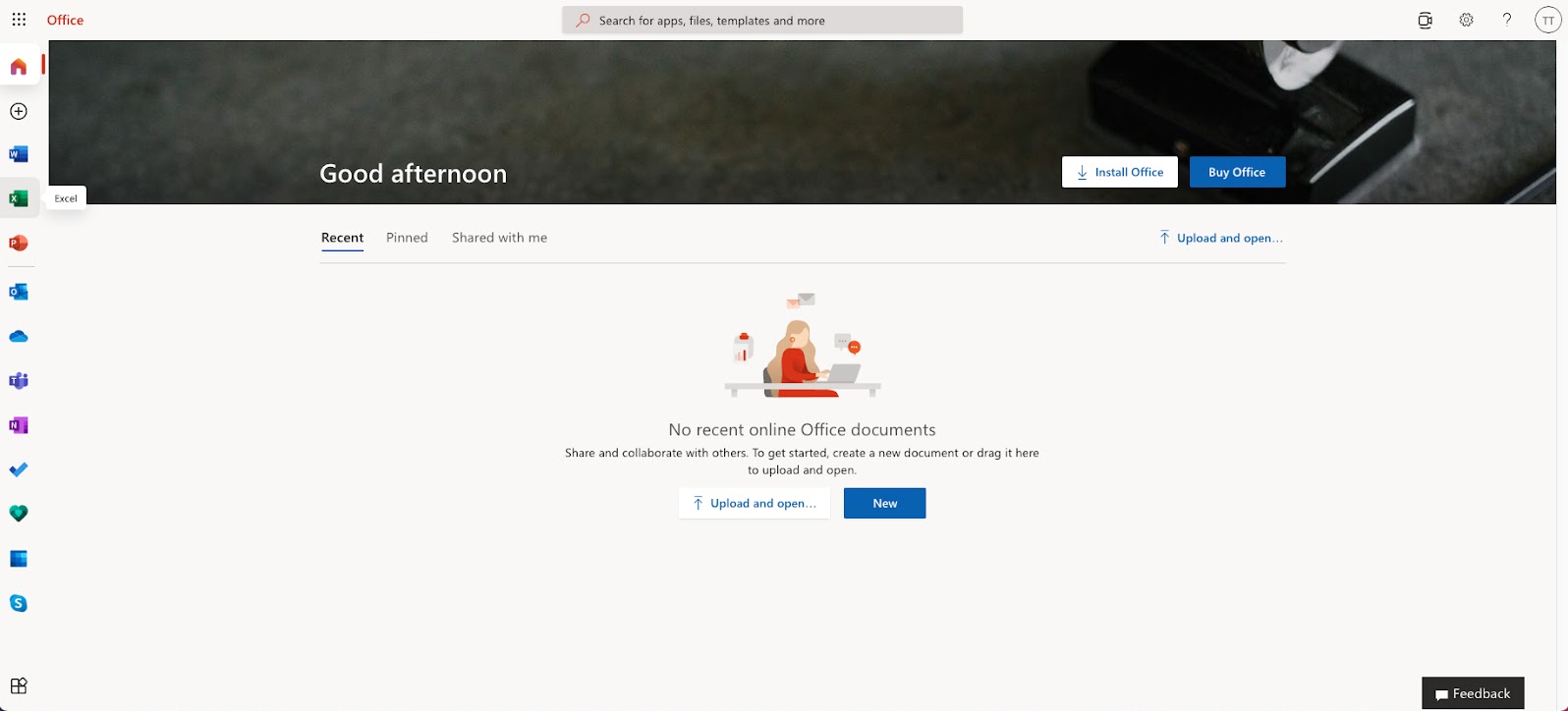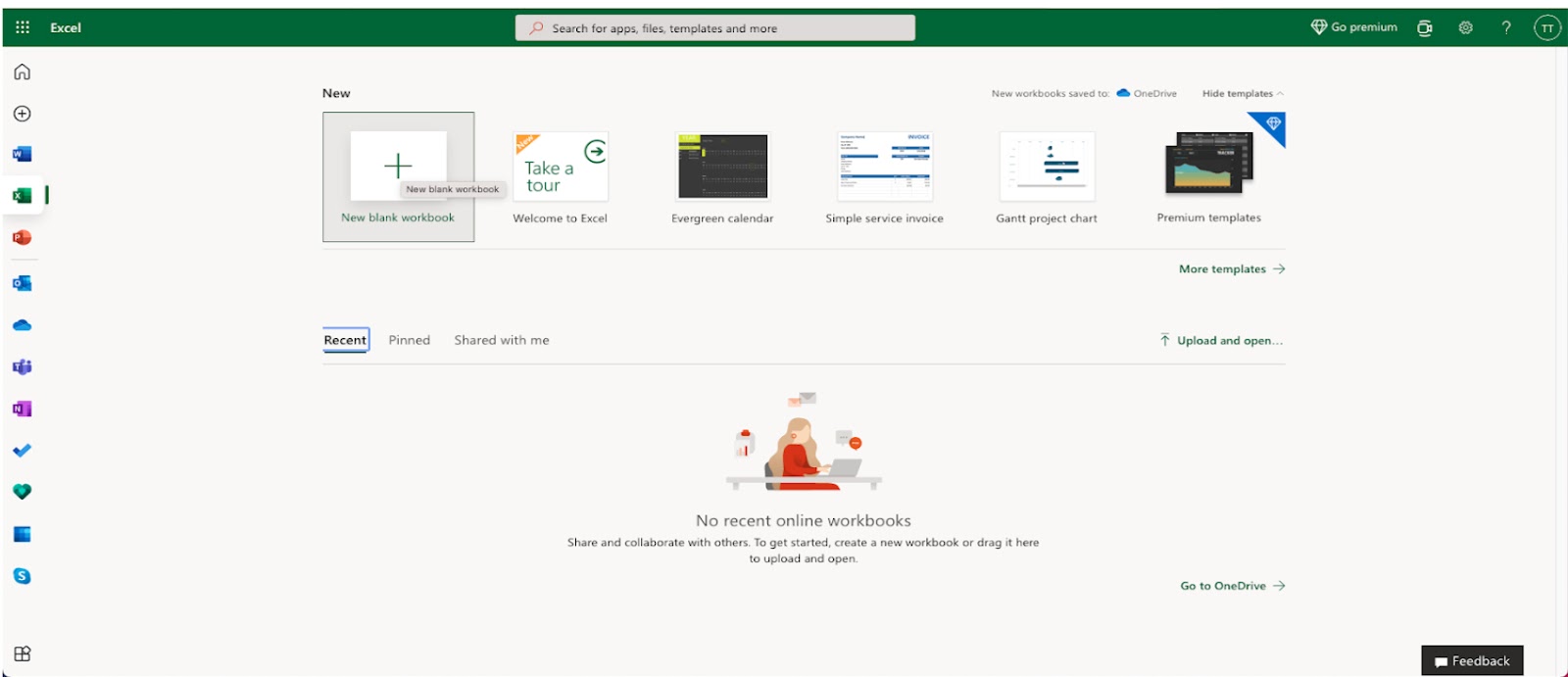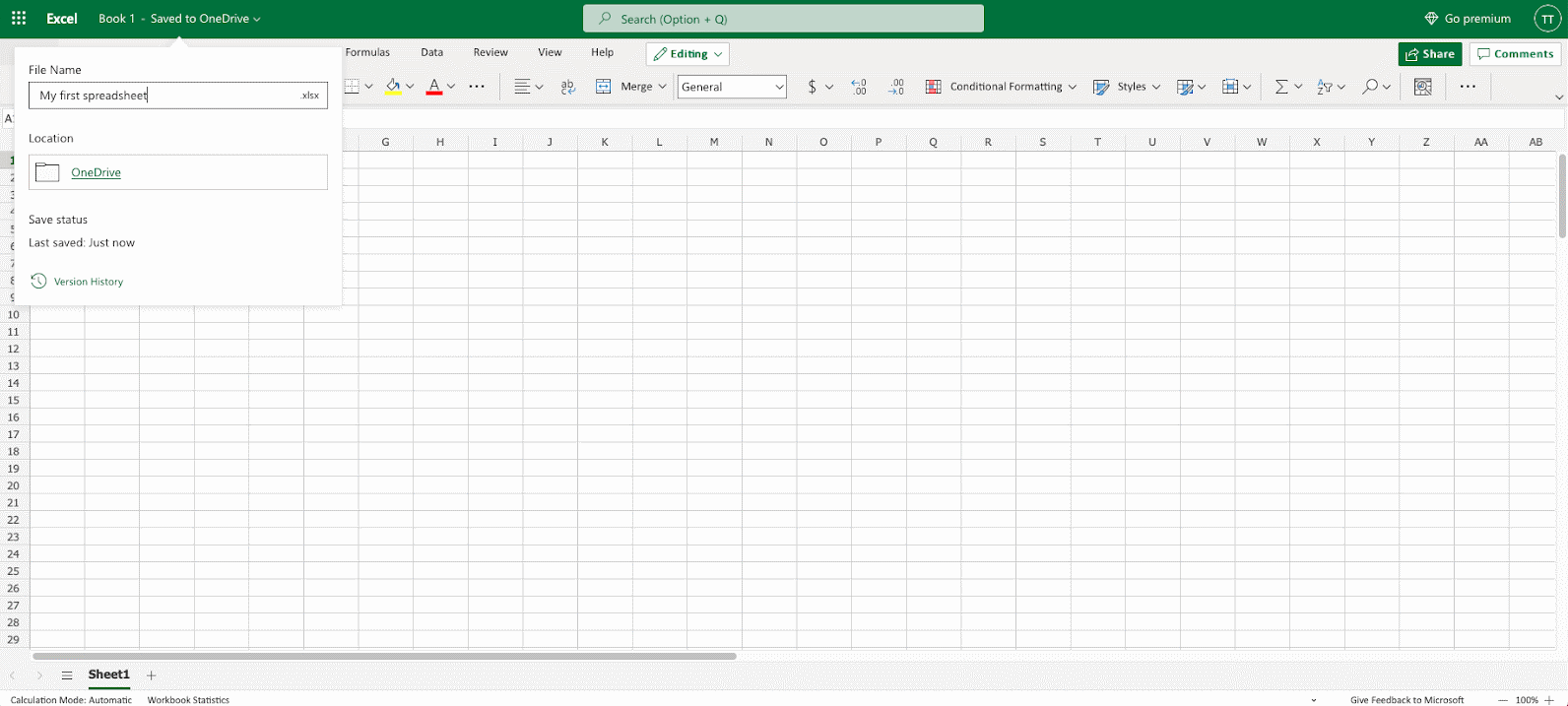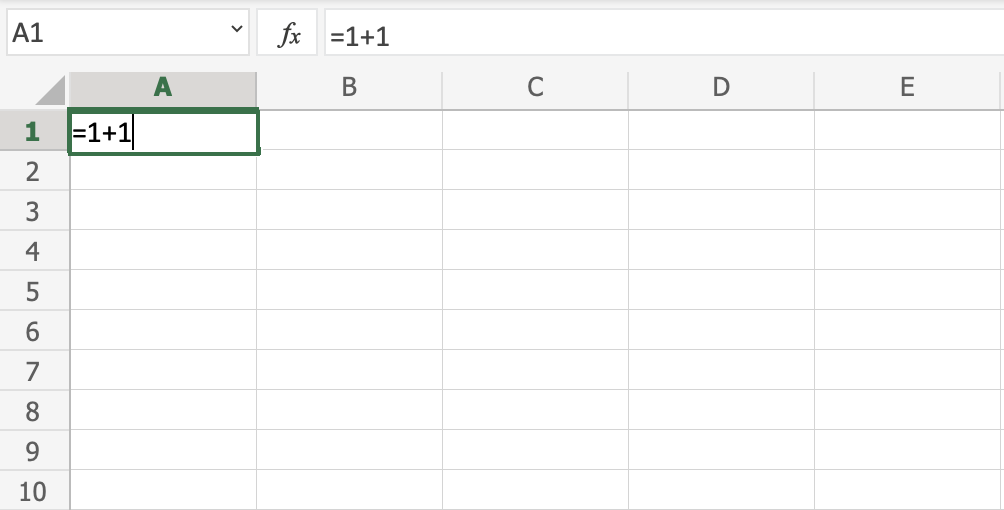Excel Get Started
Office 365
The easiest way to get started with Excel, is to use Office 365.
Office 365 does not require downloading and installation of the program. It simply runs in your browser.
In our tutorial we will use Office 365, which can be accessed from www.office.com.
Install
Once you have successfully logged into Office through www.office.com, click on the Excel icon on the left side to enter the application:

After entering the Excel application, click on the New blank workbook button to get started with a new workbook.

Enter a name for your workbook, and hit the enter button:

The Excel view has columns and rows, similar to a squared math exercise book.
Do not worry if the functionality looks overwhelming at first. You will get comfortable as you learn more in the chapters to come.
For now focus on the rows, columns, and the cells.
Ok. Let's make a function!
- First, double click the cell
A1, the one that is marked with the green rectangle in the picture. - Second, type
=1+1. - Third, hit the enter button:
Congratulations! You have typed your first function, 1+1=2.



